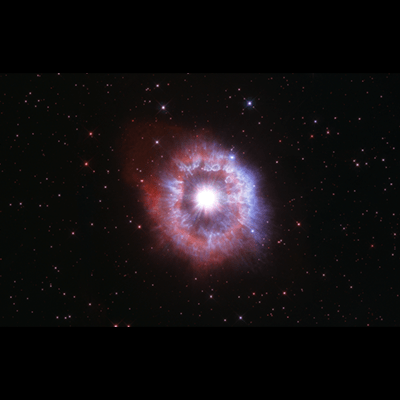Instead of Betelgeuse, Keep Your eye on AG Carinae, Another Star That’s About to go Supernova
By Andy Tomaswick
Astrophotography is one of the most gratifying parts of space exploration, and there’s nothing better at it than Hubble. Recently, it celebrated the 31st anniversary of its launch by taking a spectacular image of one of the most impressive stars in the sky – AG Carinae. In the not too distant future, Hubble, or a successor, might be able to capture an even more spectacular display from the star when it goes supernova.
AG Carinae, located appropriately in the constellation Carina, is one of the most luminous stars in the sky, though its apparent brightness on Earth is somewhat diminished give its 20,000 light year distance from Earth. The star is famous for a number of reasons, including that it is one of only 50 known luminous blue variable stars.
Credit: NASA / ESA / STScI, Leah Hustak (STScI) Alyssa Pagan (STScI), Joseph DePasquale (STScI), Greg T. Bacon (STScI)
Luminous blue variables are extremely short lived and violent, barely balancing between exploding into a supernova and collapsing under its own weight into a black hole. As part of their life cycle, they occasionally emit a spectacular outburst that creates a kind of glowing shell around them, as can be seen in the Hubble image of AG Carinae.
Outbursts like the one in the picture only happen once or twice in a luminous blue variable’s lifetime. They occur when radiation pressure from the interior of the star expands it out to such an immense size that it pushes material out of itself, then collapses back into a more stable state for potentially millions of years.

Credit: Judy Schmidt / Hubble
In the case of AG Carinea, that outburst took place about 10,000 years ago, and ejected about 10 times the Sun’s mass and is approximately 5 light years across, a little more than the distance from the Sun to the Alpha Centauri system. Material from the explosion is then subjected to the immense solar winds coming from the supermassive star, which itself is still approximately 70 times the mass of the Sun.
Traveling at up to 670,000 miles an hour, that solar wind is about 10 times faster than the ejecta, creating a “snowplow” effect that clears away some of the area directly around the star. At points around the star, the wind broke through the shall of material and dispersed it even more, as can be seen in the faint red glow in the upper left part of the Hubble image.

Credit: Jon Morse (University of Colorado) & NASA Hubble Space Telescope
Other prominent features of the Hubble image include “tadpoles” and “bubbles” that can be seen highlighted in blue. These features are dust clumps that are denser than the rest of the ejecta material, and partially caused by interactions with the same stellar wind.
The image itself was taken in both visible and ultraviolet light, which allows for a clearer view of the filaments of material surrounding AG Carinae. Hubble isn’t only taking pictures just for dramatic effect though. Its in the middle of the largest program in its history, known as the Ultraviolet Legacy Library of Young Stars as Essential Standards (ULLYSES), which focuses on young stars such as the blue luminous variables. With luck, the program might catch one of these ultra-rare stars at its expected end – a shocking supernova blast. If there’s one current observational platform capable of capturing such an event in all its glory, its Hubble.
Credit: Nolan Walborn & Hubble Space Telescope YouTube Channel
Learn More:
Hubblesite – PETULANT STAR EJECTS SPECTACULAR BUBBLE OF GLOWING GASES
Sci-News – Hubble Celebrates Its 31st Birthday with Incredible Image of AG Carinae
cnet – Stunning Hubble image captures monster star ‘doing something weird’
UT – MN112 – A New Luminous Blue Variable Found From Its Nebula?
Lead Image:
Spectacular image of the luminous blue variable star AG Carinae released by Hubble for it’s 31st launch anniversary.
Credit: NASA, ESA, STScI
The post Instead of Betelgeuse, Keep Your eye on AG Carinae, Another Star That’s About to go Supernova appeared first on Universe Today.

May 3, 2021 at 12:06AM
via Universe Today read more...

Post a Comment